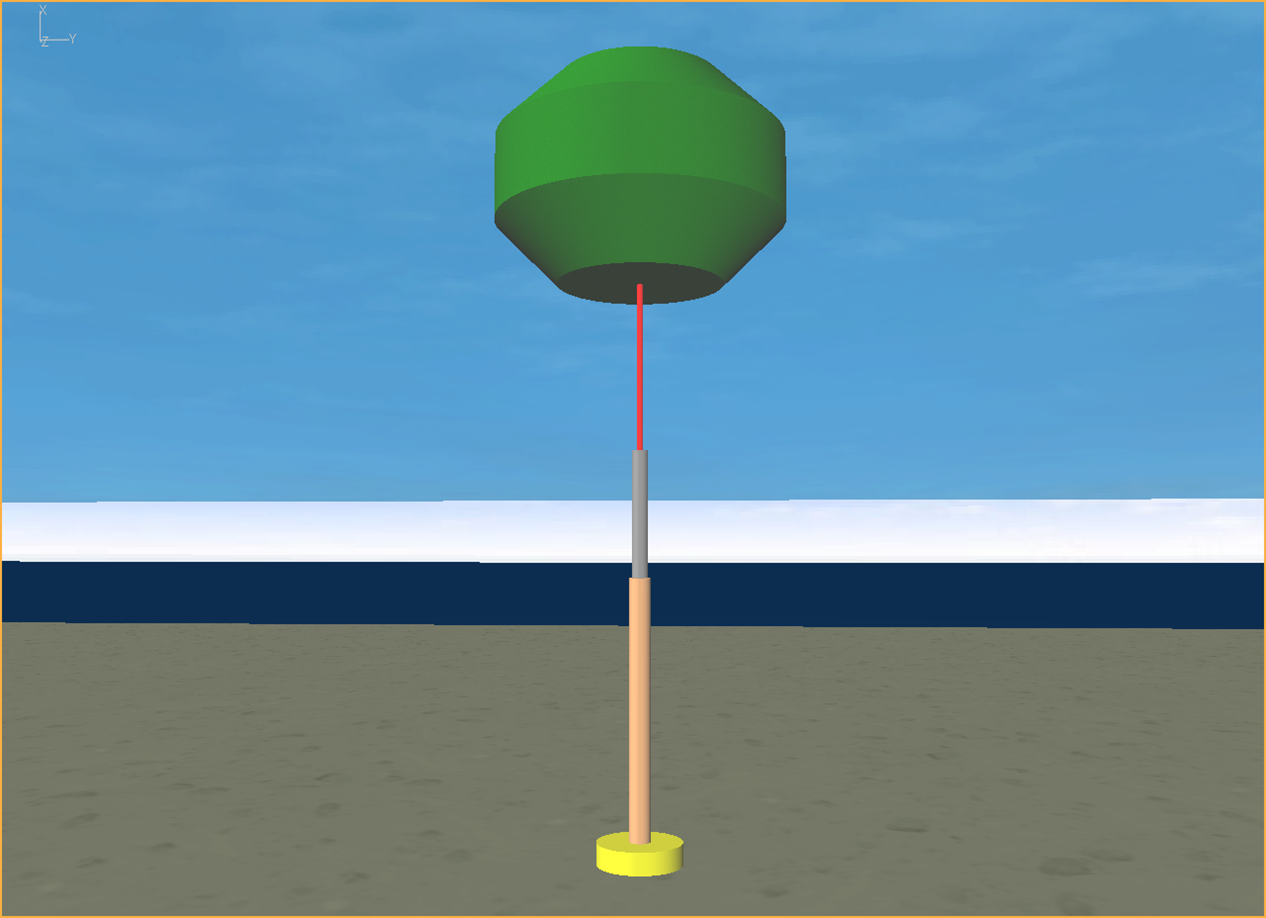The Flexcom model of the wave energy converter is shown below.

Flexcom model of Submerged Point Absorber
The buoy is modelled using a straight Line along its central axis. A Line Location is used to position a finite element node at the centre of gravity. The line is assigned rigid Stiffness terms as the buoy is assumed to act as a rigid body. The line is assigned a Mass per Unit Length of zero (as the total mass is concentrated at the centre of mass), a Buoyancy Diameter of zero (as the total buoyancy is concentrated at the centre of buoyancy), and a Drag Diameter of zero (to suppress the application of Morison drag loads).
A Floating Body is defined for the buoy to model its hydrodynamic characteristics. Inertia terms are specified at the centre of gravity. Hydrostatic Stiffness terms are used to simulate restoring forces and moments due to buoyancy. Added Mass, Radiation Damping and Force RAO coefficients are defined over a range of discrete frequencies - these terms enable the computation of incident, diffracted and radiated (linear) wave potentials to be simulated. Note that these inputs are derived separately from a radiation-diffraction analysis.
In order to maintain the buoy in a submerged position, a vertical Point Load is applied to counteract the mean/static uplift force experienced by the buoy.
The tether is also modelled using a straight Line, and attached to the base of the buoy using an Equivalent Node. Realistic Stiffness, Mass per Unit Length, Buoyancy Diameter and Drag Diameter terms are assigned to the tether.
Power Take-Off
The power take-off mechanism is modelled using a Damper Element and a Spring Element in parallel. Both elements run between the seabed anchor point (constrained using Fixed Boundary Conditions) and the base of the tether (connected via an Equivalent Node). The damper provides a linear resistance which is proportional to the rate of expansion or contraction of the power take-off. In regions of free movement the spring element provides a low restoring force. If the mechanism approaches its end stops, the spring stiffness is increased to provide a high level of resistance to any further motion.